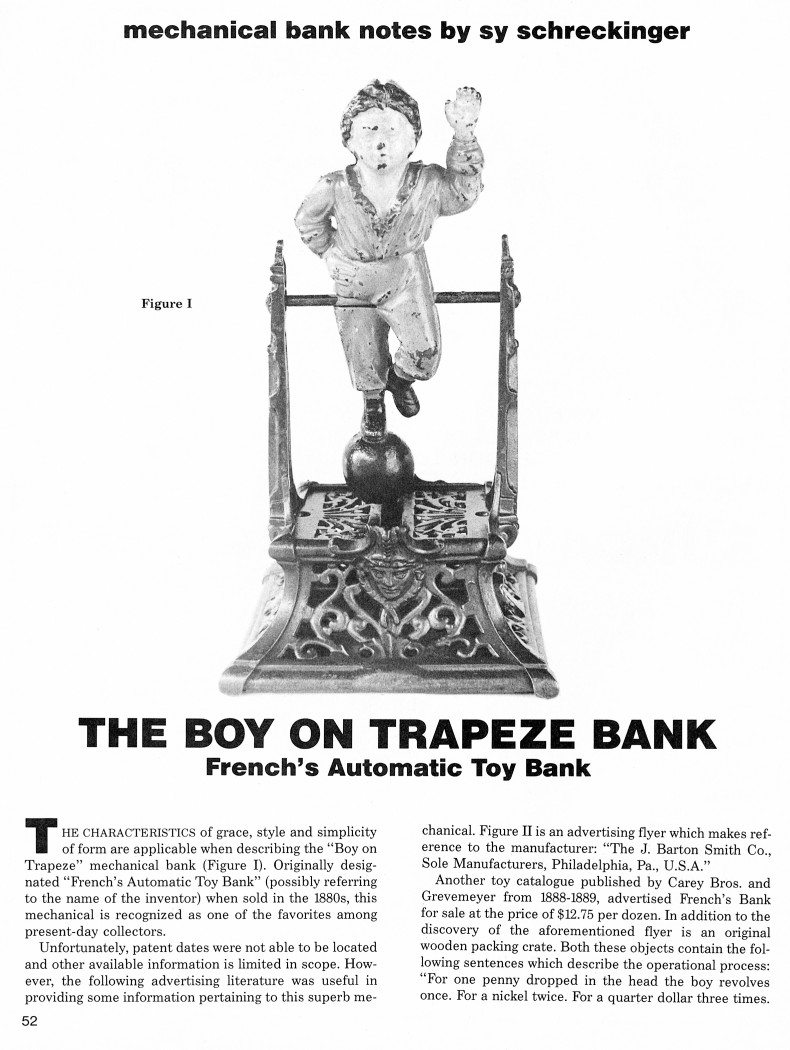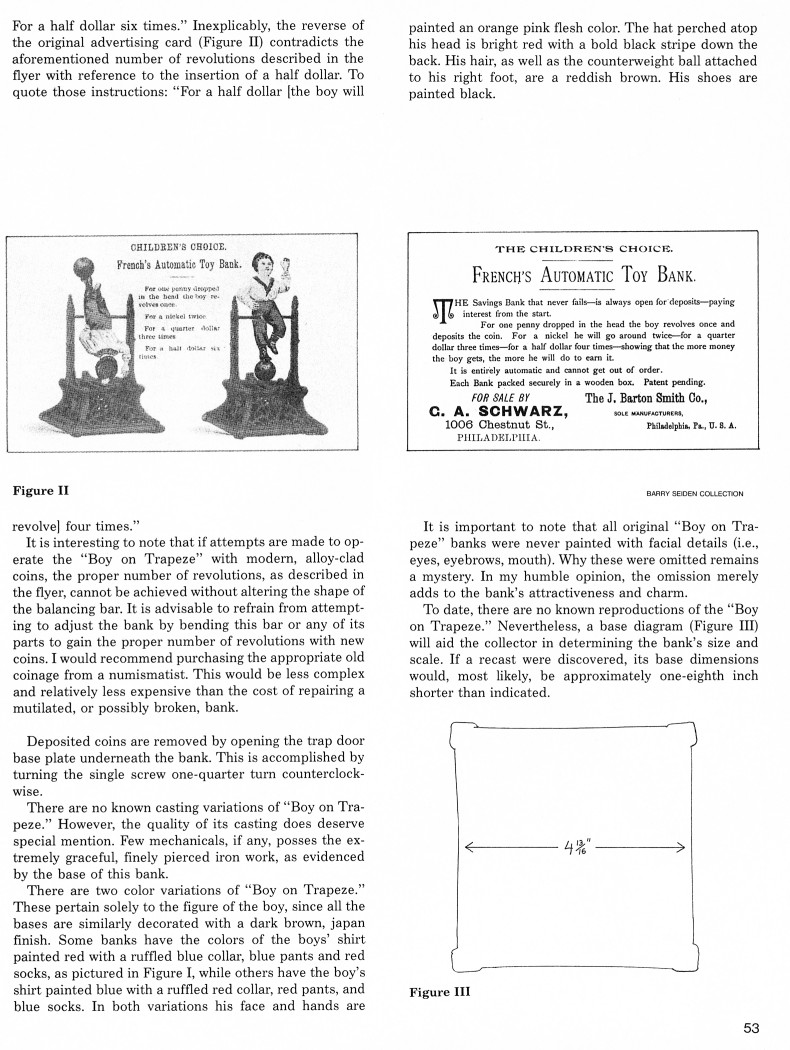|
The Boy on Trapeze Bank
by Sy Schreckinger – ANTIQUE TOY WORLD Magazine – June, 1989
The
characteristics of grace, style and simplicity of form are applicable when
describing the "Boy on Trapeze" mechanical bank (Figure I). Originally
designated "French's Automatic Toy Bank" (possibly referring to the name
of the inventor) when sold in the 1880s, this mechanical is recognized as
one of the favorites among present-day collectors.
Unfortunately, patent dates were not able to be located and other
available information is limited in scope. However, the following
advertising literature was useful in providing some information pertaining
to this superb mechanical. Figure II is an advertising flyer which makes
reference to the manufacturer: "The J. Barton Smith Co., Sole
Manufacturers, Philadelphia, Pa., U.S.A."
Another toy catalogue published by Carey Bros. and Grevemeyer from
1888-1889, advertised French's Bank for sale at the price of $12.75 per
dozen. In addition to the discovery of the aforementioned flyer is an
original wooden packing crate. Both these objects contain the following
sentences which describe the operational process: "For one penny dropped
in the head the boy revolves once. For a nickel twice. For a quarter
dollar three times. For a half dollar six times." Inexplicably, the
reverse of the original advertising card (Figure II) contradicts the
aforementioned number of revolutions described in the flyer with reference
to the insertion of a half dollar. To quote those instructions: "For a
half dollar the boy will revolve four times."
It is interesting to note that if attempts are made to operate the
"Boy on Trapeze" with modern, alloy-clad coins, the proper number of
revolutions, as described in the flyer, cannot be achieved without
altering the shape of the balancing bar. It is advisable to refrain from
attempting to adjust the bank by bending this bar or any of its parts to
gain the proper number of revolutions with new coins. I would recommend
purchasing the appropriate old coinage from a numismatist. This would be
less complex and relatively less expensive than the cost of repairing a
mutilated, or possibly broken, bank.
Deposited coins are removed by opening the trap door base plate
underneath the bank. This is accomplished by turning the single screw
one-quarter turn counterclockwise.
There are no known casting variations of "Boy on
Trapeze." However, the quality of its casting does deserve special
mention. Few mechanicals, if any, posses the extremely graceful, finely
pierced iron work, as evidenced by the base of this bank.
There are two color variations of "Boy on Trapeze." These pertain
solely to the figure of the boy, since all the bases are similarly
decorated with a dark brown, japan finish. Some banks have the colors of
the boys' shirt painted red with a ruffled blue collar, blue pants and red
socks, as pictured in Figure I, while others have the boy's shirt painted
blue with a ruffled red collar, red pants, and blue socks. In both
variations his face and hands are painted an orange pink flesh color. The
hat perched atop his head is bright red with a bold black stripe down the
back. His hair, as well as the counterweight ball attached to his right
foot, are a reddish brown. His shoes are painted black.
It is important to note that all original "Boy on Trapeze" banks were
never painted with facial details (i.e., eyes, eyebrows, mouth). Why these
were omitted remains a mystery. In my humble opinion, the omission merely
adds to the bank's attractiveness and charm.
To date, there are no known reproductions of the "Boy on Trapeze."
Nevertheless, a base diagram (Figure III) will aid the collector in
determining the bank's size and scale. If a recast were discovered, its
base dimensions would, most likely, be approximately one-eighth inch
shorter than indicated.
CORRECTION: (from
May, 1990) In the
June 1989 issue of Antique Toy World, "Boy on Trapeze"
article, it was mistakenly stated that no reproductions of the bank exist.
This bank was indeed reproduced several years ago by the Book of Knowledge
Collection, and, more recently, a very crudely reproduced "Boy on Trapeze"
had been imported to the United States from Taiwan. Please note that all
reproductions are at least one-eighth of an inch smaller than the base
diagram in the June 1989 article indicates.
|


